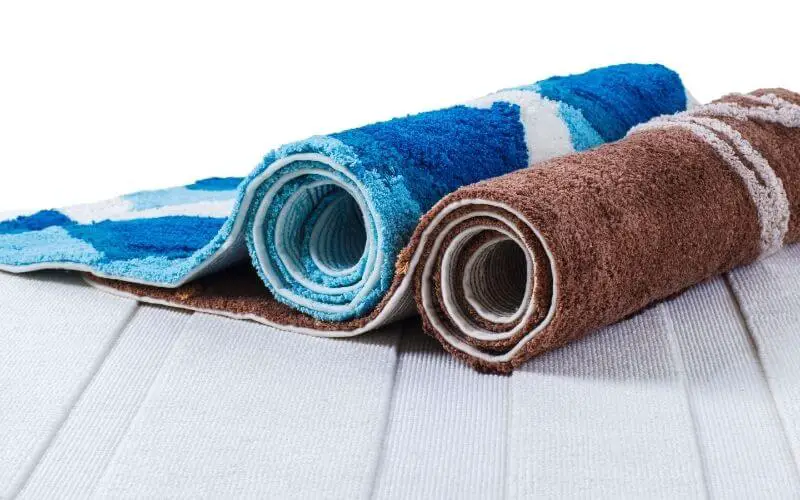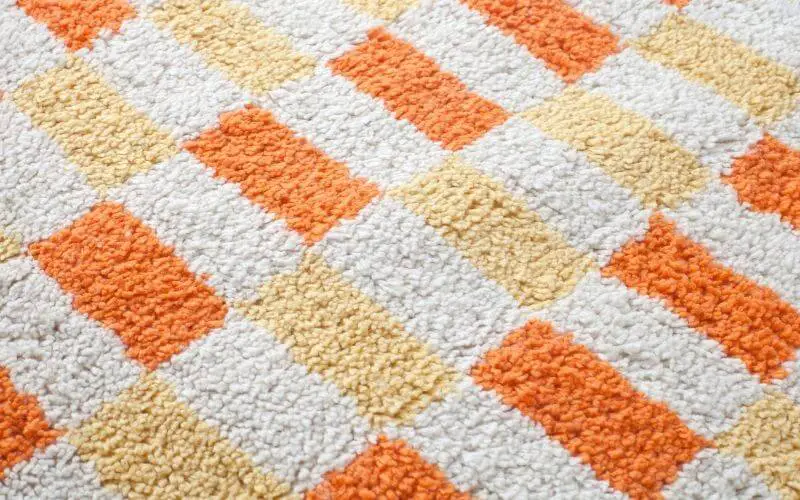Over time, the damage of everyday use, frequent spills, and fading caused by sunlight becomes very prominent on your carpet. All this causes a noticeable deterioration of the carpet’s beauty; even if you have a high-quality carpet, it is bound to show wear after a while.
Instead of having to go through the expensive route of replacing your carpet, you may be wondering, if you can dye carpet instead. Can you dye carpet? Yes you can dye carpet, dye can rejuvenate your carpet’s looks and cover up stains and wear. You can do this yourself or hire a professional to dye your carpet for you.
If you are working on a tight budget, here’s how to dye your carpet yourself without any special equipment.
Read: why you carpet looks worse after cleaning
How To Dye Carpet
Table of Contents
Before you start the dying process, keep in mind that you can not dye a carpet that is of darker color to a lighter color, and you may end up with a color that is slightly different from the color on the packaging.
This is because the original color of your carpet, as well as the type of stain you are trying to cover up, has an impact on how the dye turns out.
To see how the final result will be, you can carry out a spot test on a small, inconspicuous area, like the areas underneath a couch or other large piece of furniture. If you like how it turns out, you can proceed with the application.
How to dye your carpet
Step 1
Before you apply the dye to your carpet, you also need to determine if your carpet is dyeable, certain types of carpets cannot be dyed, and only nylon and wool are dye-friendly.
If you can’t remember the type of carpet you own, you can carry out a test by cutting a small tuft of fiber from the carpet and carefullyset it ablaze on a fire-resistant plate.
You also need to keep a fire extinguisher handy, when burning the fibers, the way it burns tells you the carpet’s content:If your carpet is made of wool, you can tell by its fire-resistance, slow-burning, and distinctive smell like burning hair, burnt wool fibers will leave behind ashes.
On the other hand, Nylon melts when burning and creates a plastic-like bead as it curls up before solidifying almost instantly.
If you could not tell the type of carpet using this test, you can cut out a one-inch square of the carpet from an inconspicuous corner and take it to a carpet showroom to get a professional opinion.
Step 2
Clear out the room and remove every piece of furniture. Also, remove all baseboard molding using a claw hammer or pry bar.
When removing the baseboards, do so with care and intent to avoid damaging them in case you decide to reuse them. But it is recommended to install new baseboards after dying your carpet so that your room can get a truly updated look.
Also, do not skip removing the baseboards. When the baseboards are removed, you can safely extend the dye job all the way to the wall instead of having to leave the edge of the baseboards a slightly lighter shade of dye than the floor.
Baseboard reinstallation can also be used to cover any color bleeding that might have happened along the bottom of the wall.
Step 3
Next, you will need to vacuum your floor, but before you do so, ensure to empty out your vacuum or replace its bag; when a vacuum is full, its suction ability is greatly hindered. Here are some deep-cleaning methods for your carpet depending on its material:For nylon carpet, use a professional/commercial steam cleaner to clean it. You can rent it for about $30 for 24 hours from home improvement and department stores.
If you have wool carpets, you need to hand them over to professionals who can give them a good wash using the right chemicals and processes for the job. Also, tell the cleaners you intend to dye the carpet after washing; they might be able to offer you some tips and even stabilize the carpet’s pH, making them ready to be dyed.
After giving the carpet a good wash, allow it to dry thoroughly overnight.
Step 4
Use masking tape to attach newspaper all along the walls to protect them from overspray. Still, the tape should also be attached carefully so that the bottoms of the papers won’t prevent any part of the rug from receiving dye.
Step 5
You need to correct any alkalinity and ph imbalance issues that your carpet may have. Your carpet may have imbalanced pH due to steam cleaning certain types of stains like stains from pet accidents.
Unfortunately, there’s no way to test for a carpet’s pH, but it is safe to assume they exist. So in order to avoid ending up with unevenly dyed carpet, it is best to stabilize your carpet’s pH before dying.
You can purchase a ph stabilizer from the same place you bought the dye, apply the product according to the manufacturer’s directions. Make sure to wear work gloves and properly ventilate the working area.
Step 6
Open up the windows and doors and put on your work gloves; also, spread additional newspaper out beneath the 1-gallon bucket and mix the dye thoroughly, making sure to follow the manufacturer’s directions carefully.
Remember that many carpet dyes are acidic and need to be mixed with hot water, so pour the dye into water that’s between 160 and 180 degrees Fahrenheit, mix it in, and you should start applying the dye immediately.
Depending on the manufacturer, 20 ounces of powder dye can be used to dye up to 1,000 square feet of carpet.
Step 7
After mixing the dye, pour it into the sprayer carefully using a funnel. Shut the sprayer up, give it a little shake, do a spot test on an inconspicuous area; inspect the results before continuing the application.
When spraying the dye, do so from one to two feet away so you can access the coverage. Then, make needed adjustments till you achieve the level of coverage you like.
Then buff in the dye using a firm but gentle bristled brush to brush. Once you achieve desired results, apply the dye to the rest of the room in the same manner.
Step 8
When dying your carpet, it is recommended to start at the farthest corner of the room and work your way towards the exit, divide the room into sections and spray on only as much as an arm’s length at a time, only apply to as much area you can buff in without stepping on newly dyed areas.
After buffing in the dye for each section, inspect the application; and make necessary adjustments if needed. Your carpet should look good as new when you are done with dying the entire carpet.
Step 9
Allow the carpet to dry according to the manufacturer’s suggested drying time; this should be around 24 hours. When your carpet is completely dry, you can go ahead and replace baseboards and return your furniture.
Read: How to remove grease stain from carpet
Conclusion
Even if you love your carpet’s current color, you may need to dye it as a last resort to hide stains. However, dying of carpets is not a common occurrence as many people prefer to have the carpet replaced, so it’s no surprise if someone wonders, “can you dye carpet?” Well, yes, you can!
Before dying your carpet, however, there are certain procedures you need to follow rigorously if you want to produce even results. You can always hire a professional to dye your carpet for you, or you can do it yourself; it’s not that difficult.

